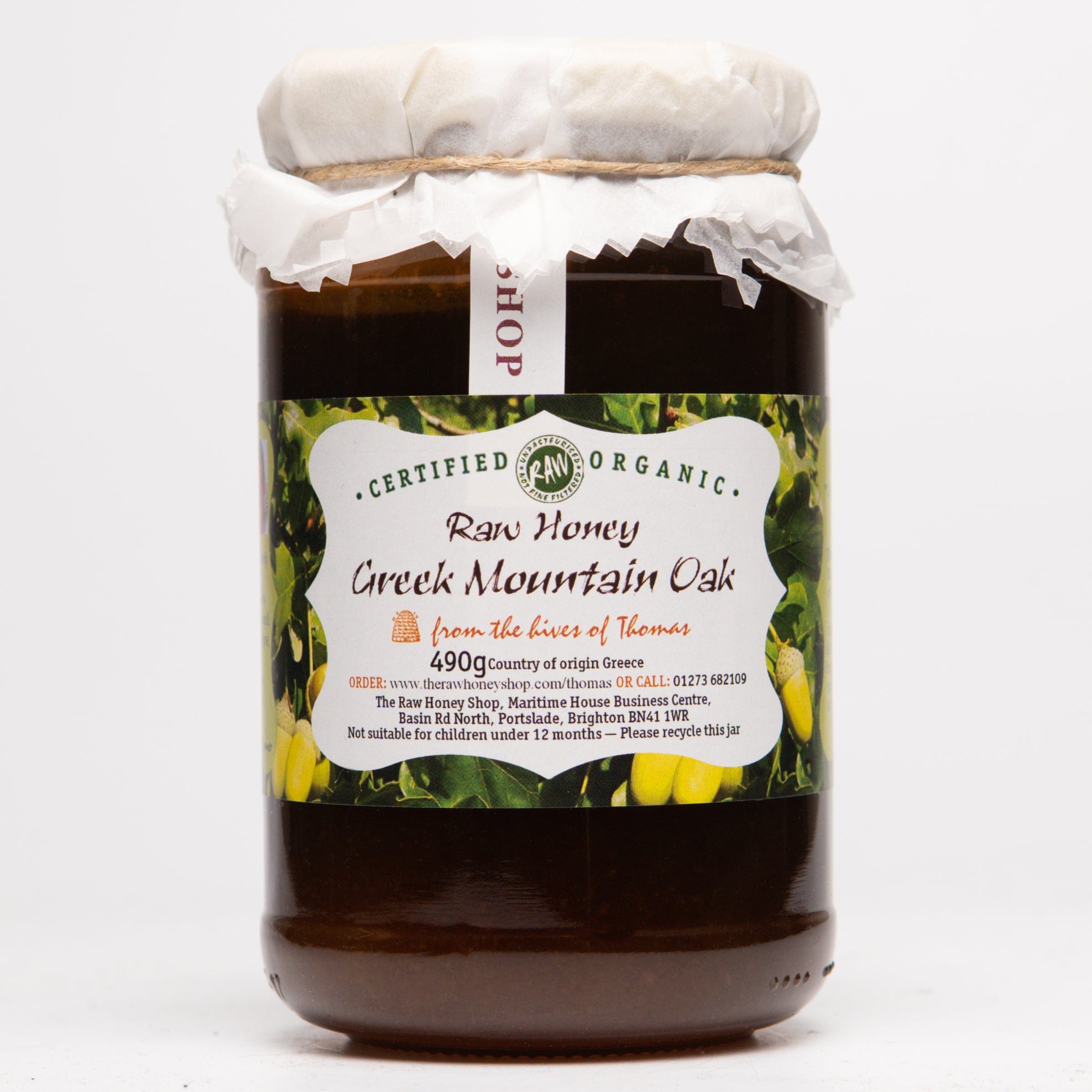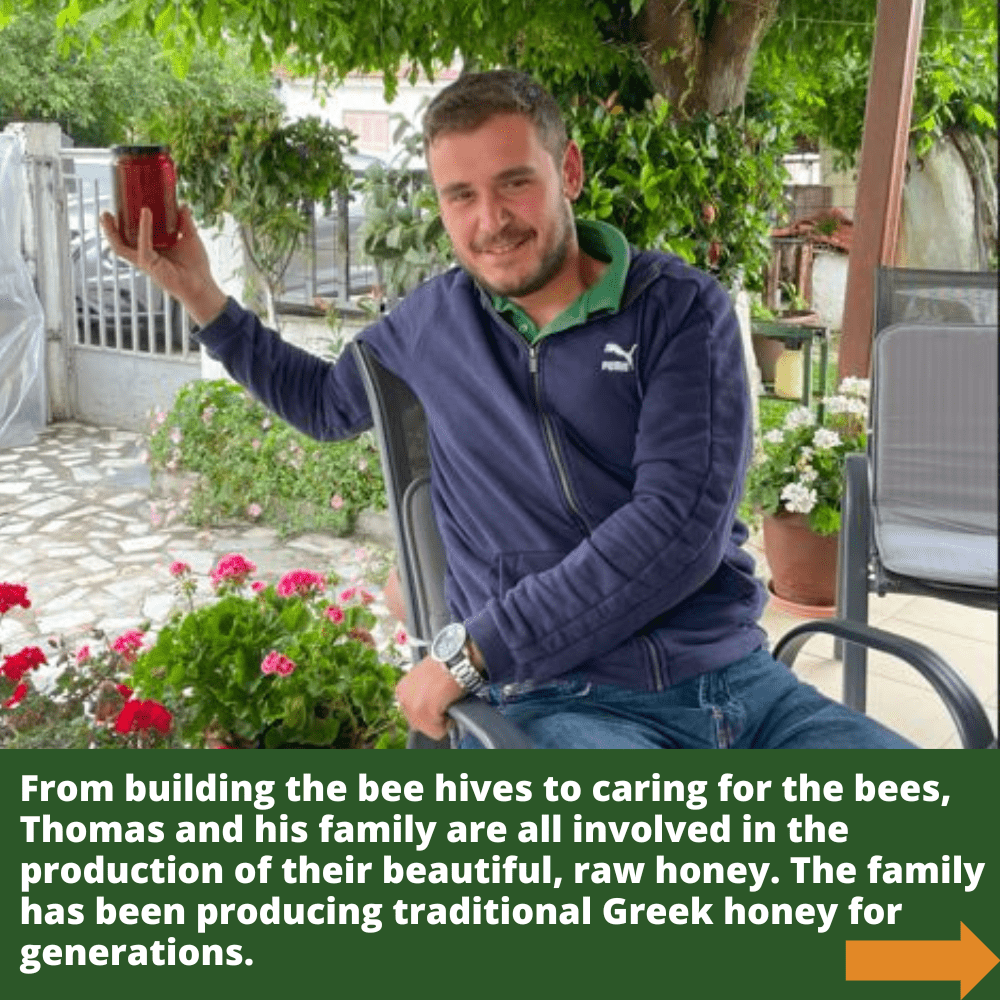Artisan Raw Greek Mountain Oak Honey
- Regular price
- PLN 143,00
- Sale price
- PLN 143,00
- Regular price
-
PLN
Artisan Raw Greek Mountain Oak Honey
This year's batch of Oak is exceptionally thick. The moisture level measures 13.6%, the lowest level we have ever had in any of the honeys we sell, including Vanilla Fir. This means that you will find the flavour of the honey very deep and intense.
-
Thomas' Raw Organic Greek Mountain Oak honey: This has a deliciously rich and mineral treacle flavour with hints of cooked apples and plums. The aftertaste lingers only briefly with a slight sourness. The aroma is similarly fruity, reminding us of cold spiced fruit sauces. The flavour and aroma make us think this could go very well with a fruitcake or Christmas pudding.
- Where does this honey come from: This Mountain Oak comes from a forest on a mountain close to a lake close in a place called Rentina.
- Colour: It's very dark, nearly black, with a slight hint of purple.
- How Raw Honey is different from Processed Honey: Raw honey generally means the honey has not been processed, it has come from the hive to the jar with minimal interference. Most supermarket honey is highly processed to make it look more attractive, usually it has been largely drained of pollen, heated and blended. Raw honey tends to vary from batch to batch, this is because it is not processed in a factory, filtered or heated to look homogeneous. Raw honey changes with the season and climate, the soil, what the bees feed on, and the nature of the colonies.
- About the beekeeper: It was brought to us by Thomas, a young Greek beekeeper, who is planning to take over his father's hives, which are in secluded forest glades. He has great enthusiasm for raw honey and natural hive products.
- More on honeydew honey: This is a dark thick runny honey – it is known as a honeydew, because it is from the sap and resin of the tree not from flower nectar. Honeydews are high in oligosaccharides, which are known for their prebiotic qualities- aiding digestion.
How Raw Honey is Different from Processed Honey
Raw honey is minimally processed, meaning it’s packed with natural enzymes, pollen, and nutrients that are often lost during processing. Most supermarket honeys are processed to create a uniform appearance, often being drained of pollen, heated, and blended. Raw honey changes in flavour, colour, and texture depending on the season and the flowers that bees feed on, making each batch unique.
Crystallisation in Raw Honey
Raw honey tends to crystallise over time due to its natural glucose content. This is a natural process and does not affect the quality of the honey. For more information on why honey crystallises, visit our blog or check Wikipedia for a more scientific explanation.
About Us
At The Raw Honey Shop, we believe that honey should be RAW, unpasteurised, and 100% natural. Since 2008, we've been introducing our customers to a world of pure, all-natural, unpasteurised honey. Our catalogue includes over 30 different varieties of raw and organic honeys, each with its own unique story and flavour.
Thank you for visiting our shop. We look forward to introducing you to a world of raw, pure, and truly wonderful honey—the way the bees intended it!
Note: The product photo is representative. The colour and texture of raw honey may vary depending on the season and level of crystallisation. Please check the product title and description for accurate contents.
























